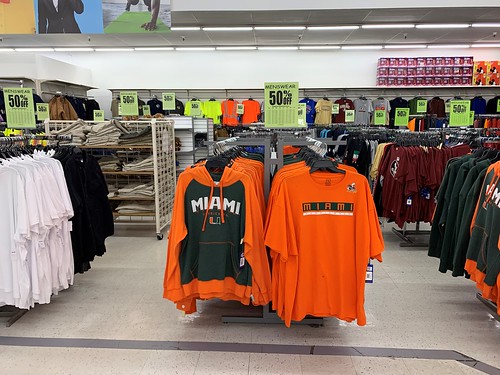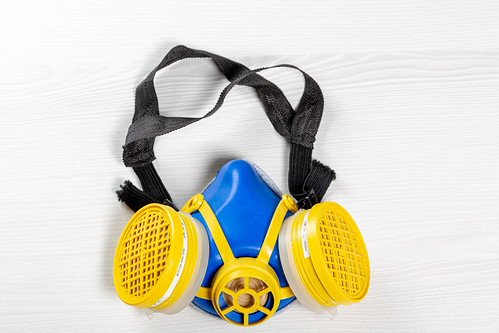The Occupational Safety and Health Administration (OSHA) is authorized to inspect regulated workplaces, although it generally limits its inspections to workplaces deemed highly hazardous (often targeted sector-wide through National Emphasis Programs (NEPs) or their regional or state equivalents), or in response to complaints or reported incidents of injury or illness (I&I). OSHA regulations include inspection procedures (29 CFR 1903), which OSHA proposed on August 30, 2023 to clarify and revise slightly. The rest of this note summarizes OSHA’s procedures briefly, including the proposed changes.
Read MoreAudit, Compliance and Risk Blog
Tags: Employer Best Practices, OSHA, Employee Rights, Employment, workplace safety
NIOSH offers Best Practice guidance for employers that host “temp” workers’
Posted by Jon Elliott on Tue, Feb 28, 2023
Is your organization hiring "temp" workers —to hedge your labor costs while gearing back up after COVID-19 perhaps? If so, occupational safety and health agencies consider your employer to be the “host employer” of these workers, and provides requirements to protect them against occupational hazards. Last year I summarized the latest US Occupational Safety and Health Administration (OSHA) guidance (HERE). Last month, the National Institute of Occupational Safety and Health (NIOSH) issued a new guidance, “Protecting Temporary Workers: Best Practices for Host Employers.” The remainder of this note summarized this NIOSH guidance, which is primarily organized into three sections.
Read MoreTags: Employer Best Practices, OSHA, Cal/OSHA
On February 7, the Occupational Safety and Health Administration (OSHA) issued a reminder to employers to protect employees from workplace carbon monoxide (CO) risks, particularly those associated with wintertime use of portable generators and heating equipment inside enclosed spaces. That reminder includes links to OSHA’s “Carbon Monoxide Fact Sheet,” which outlines hazards and appropriate employer responses. The rest of this note discusses OSHA’s explanation of these risks and how to manage them.
Read More
Tags: Employer Best Practices, OSHA, Employment, Carbon Dioxide
Ebola virus: What to do when an employee is about to travel to Uganda or another affected country
Posted by BLG’s Labour and Employment Group on Mon, Oct 31, 2022
These past few weeks, the World Health Organization (WHO) has expressed concern regarding an outbreak of the Ebola virus in Uganda. While this is now the fifth wave of this virus to hit the country, current victims do not appear to respond to vaccines quite as well as in the past. The responsible strain therefore presents a very high mortality rate, ranging between 90 and 100%.
The article below was first published during a previous outbreak of the virus in 2014, and was updated to address the current situation in 2022. We recommend that you keep an eye on the Public Health Agency of Canada’s latest guidelines.
What is Ebola?
Ebola is an hemorrhagic fever. Its incubation period lasts between 2 to 21 days. Contamination is possible as soon as the first symptoms arise and the risk lasts as long as the virus is present in an individual’s blood. Inter-human transmission can occur through direct contact with infected blood or other bodily fluids, or by touching an object soiled with the same secretions.
Providing health care, participating to funeral rites and having sexual contacts with an infected person carry the most risks when it comes to contracting the virus. As well, consuming wild animals’ meat or being in contact with infected animals may also expose humans to the virus.
Recommended measures for employers
As an employer, how should you react when an employee announces that they have made travel plans to a country at risk?It should be noted that no case of an Ebola virus infection has been identified in Canada as of publication date. However, the employer can take action to protect the workplace when an employee returns from visiting an affected area.
Since the incubation period of 21 days is significant, preventive measures will help to ensure the employee will not lose pay, nor have to exhaust their accrued time-off days.
1. Before departure
-
Check with the employee as to their itinerary and date of return on Canadian soil.
-
Provided the employee's functions allow it, establish a work-at-home agreement for their first few days back on Canadian soil and provide them with the tools necessary to perform their functions.
-
Inform the employee that they must follow the guidelines for symptom self-monitoring for 21 days following their return, including taking their temperature daily, and make the employee’s commitment to this agreement a condition for returning to the workplace.
-
Advise the employee not to report to work if they have a fever or show other symptoms (such as muscle aches, a headache or sore throat, vomiting, diarrhea, a rash, bleeding gums, etc.) Visit the WHO’s page about Ebola to learn more.
-
Notify the employee that they will have to leave the workplace in case of a sudden onset of fever or other symptoms during the day.
-
Notify the employee that if they seem feverish, they will not have access to the workplace until a medical certificate attests their fitness.
2. Upon returning
-
Remind the employee of their commitment to self-monitor, and that access to the workplace will be denied them in case of a fever.
-
Direct the employee to health services in case of a fever or the appearance of other symptoms.
3. General preventive measures, actionable immediately
-
It is desirable to modify vacation application forms so that employees disclose their travel destination, to facilitate preventive measures before and after their return.
-
Likewise, if the employer authorizes employees to work from abroad, the teleworking policy should include a duty to divulge any change in location and any location visited while working abroad, at least 30 days prior to the employee’s return to the employer’s establishment.
If your organization provides health care or works with vulnerable or immunocompromised persons, additional precautionary measures may be necessary.
Contact the BLG Labour and Employment Law Group for assistance with planning and deploying adequate preventive measures, or regarding any other concern you may have as an employer.STP ComplianceEHS (STP) provides a variety of single-law and multi-law services, intended to facilitate clients’ understanding of and compliance with requirements. STP has recently published an update to its guide titled Employment Law: Solutions for the Canadian Workplace.
About the author
BLG’s Labour and Employment Group: For employment law advice on workplace legal issues arising from COVID-19, BLG's Labour and Employment team is ready and available to assist with navigating these unprecedented times. BLG has also created a COVID-19 Resource Centre to assist businesses on a variety of topics, including contractual risks, public disclosure requirements, education and criminal law.
-
By: Katherine Poirier, Don J. Alberga, Catherine Pronovost, Stéphanie Desjardins
-
Services: Labour & Employment
Tags: Business & Legal, Employer Best Practices, Employee Rights, Employment Law, Labour & Employment
When someone receives occupational direction and/or compensation from more than one entity, who’s the boss? Sometimes it’s obviously one or the other, sometimes it’s not clear which one is, and sometimes the answer may be “both.” These unclear situations are fairly common; consider franchise operations where the franchisor exerts some controls over how the franchisee does business, workplaces where “temp agencies” supply workers who receive at least some directions from the host but get paid by the agency, and worksites where a prime contractor integrates services by subcontractors and their employees. Identifying the boss(es) has important implications, not just for who writes a paycheck but for who is subject to legal responsibilities and prohibitions.
Read MoreTags: Business & Legal, Employer Best Practices, Employee Rights, NLRB
North American employers are required to verify new employees’ identities and eligibility to work in the country. In the United States, employers’ inquiries must confirm eligibility to work in the U.S. when an employee is actually being hired (not just applying), using Form I-9 (Employment Eligibility Verification), which is issued and administered by the U.S. Citizenship and Immigration Services (USCIS) unit of the federal Department of Homeland Security (DHS). USCIS has revised the I-9 form – the new form is dated October 21, 2019 but was only formally published on January 31, 2020. The new version includes minor changes from the preceding one (which was dated July 17, 2017 and set to expire August 31, 2019 but subject to extended viability by USCIS pending approval of the newest version).
Read MoreTags: Business & Legal, Employer Best Practices, Health & Safety, Employee Rights
Appeals Court Affirms OSHA’s Approach to Workplace Air Testing and Respiratory Protection
Posted by Jon Elliott on Tue, Feb 11, 2020
The Occupational Safety and Health Administration (OSHA) requires employers to evaluate whether air quality in their workplaces requires respiratory protection for workers, and to establish comprehensive evaluation and respiratory protection programs where necessary. (I wrote about recent revisions here). Late last year, a federal appeals court upheld OSHA’s approaches to workplace testing requirements under the Respiratory Protection Standard (Standard) (Secretary of Labor v. Seward Ship's Drydock, Inc.).
Read MoreTags: Business & Legal, Employer Best Practices, Health & Safety, OSHA, Employee Rights
As we approach the winter holidays, retailers everywhere are planning their biggest cycles of annual sales. One doesn’t have to be a grinch to notice that these events can introduce additional hazards for retail employees – and for others who may be shopping. It’s therefore a good time to review guidance for managing these hazards, which was promulgated by the Occupational Safety and Health Administration (OSHA) in 2012. This guidance followed a national review after a highly-publicized incident during which a worker at a Long Island Walmart was trampled to death by a crowd mobbing the store’s Black Friday (day after Thanksgiving) sales event in 2008. OSHA determined that Walmart should have anticipated crowd-related hazards, and fined the company for a violation of the Employer’s General Duty Clause (I wrote about this here)
Read MoreTags: Business & Legal, Employer Best Practices, Health & Safety, OSHA, Employee Rights, EHS, Workplace violence
The Occupational Safety and Health Administration (OSHA) does not routinely inspect all employers, but instead allocates its inspector resources based on the agency’s evolving compliance and enforcement priorities. These priorities include a complex set of national/state/local priorities, such as “national emphasis programs (NEPs)” for process chemical safety or machine guarding, industry focus projects on primary metals industries, and site-specific responses to reported injuries or worker complaints. To meld and rationalize these overlapping priorities, OSHA headquarters periodically establishes weighting programs under which local offices tabulate inspection statistics to demonstrate inspection productivity by achieving higher overall scores. Effective October 1, 2019, OSHA has introduced a revised inspection weighting system, intended to motivate local OSHA offices to revise their inspection priorities.
Read MoreTags: Business & Legal, Employer Best Practices, Health & Safety, OSHA, Employee Rights, PSMS
The Occupational Safety and Health Administration (OSHA) requires employers to evaluate whether air quality in their workplaces requires respiratory protection for workers, and to establish comprehensive evaluation and respiratory protection programs where necessary. In September, OSHA issued minor revisions to its respiratory protection requirements provisions for general industry (29 CFR 1910.134), adding two new quantitative fit testing protocols. Because of these changes, now is a good time for employers to review requirements and compliance programs.
Read MoreTags: Employer Best Practices, Health & Safety, OSHA, Employee Rights, Environmental risks, EHS










